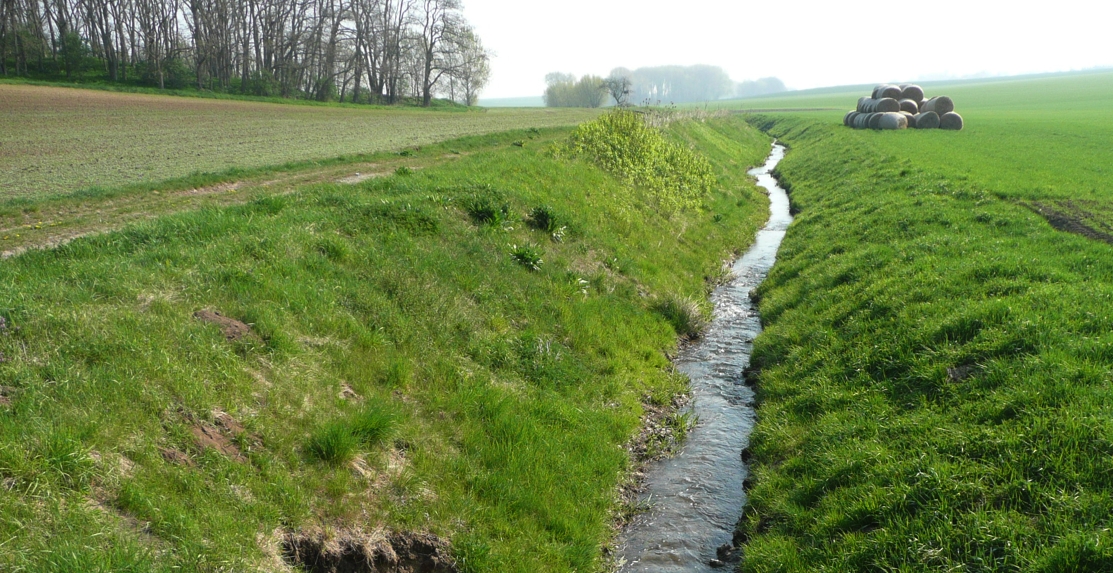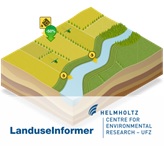
Ecosystem analysis
The land use close to surface waters affects the input and ecological effects of pesticides. We analyze and model the landscape related pesticide risk.
Pesticide input can be estimated using monitoring or GIS information about agricultural land use and the position of sewage treatment plants [1,3]. A more accurate modelling of pesticide input considers additional information on slope, soil characteristics, crops and weather conditions [2] as well as the presence of buffer strips [3]. The environmental impact of pesticide input, quantified by SPEARpesticide, may increase due to interactions with other stress factors [1] or decrease due to the presence of uncontaminated refuges like forest areas [3,4]. Relevant interactions are summarized in synthesis models and enable to give recommendations for landscape management.
Nationwide Monitoring of Small Streams
We manage a joint pilot study of scientist from the UFZ and the Koblenz-Landau University, the German Federal Environmental Agency and the federal states on a national monitoring of exposure and effects of plant protection products in small and medium streams.
Linking human disease and pesticide contamination in African streams
Pesticides may affect the infectivity of Schistosoma by supporting higher densities of intermediate hosts “freshwater snails”. The SENTINEL project identifies the potential effects of freshwater pollution by agrochemicals on the abundance of hosts for human-pathogenic nematodes that cause schistosomiasis.
LanduseInformer
The landuseInformer is a
synthesis model to estimate the ecological impact of agricultural land
use. This tool allows to compare the efficiency of mitigation measures.
Selected publications
- Bunzel K, Liess M, Kattwinkel M 2014. Landscape parameters driving aquatic exposure and effects. Environmental Pollution, 186, 90-97.
- Schriever CA, Hansler-Ball M, Holmes C, Maund S, Liess M 2007. Agricultural intensity and landscape structure: influences on the macroinvertebrate assemblages of small streams in northern Germany. Environmental Toxicology and Chemistry, 26 (2), 346-357.
- Bunzel K, Kattwinkel M, Liess M 2013. Effects of organic pollutants from wastewater treatment plants on aquatic invertebrate communities. Water Research, 47, 597-606.
- Orlinskiy P, Münze R, Beketov M, Gunold R, Paschke A, Knillmann S, Liess M 2015. Forested headwaters mitigate pesticide effects on macroinvertebrate communities in streams: Mechanisms and quantification. Science of the Total Environment, 524-525, 115-123.



